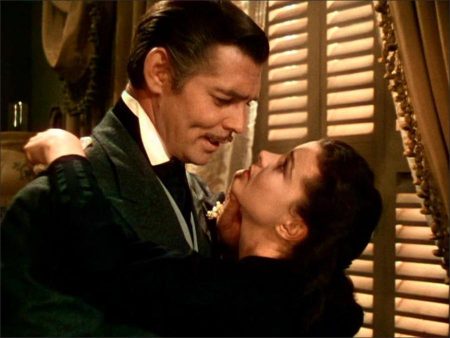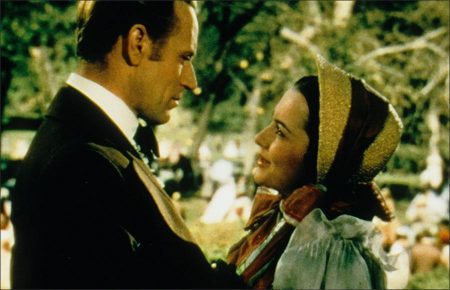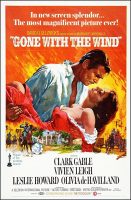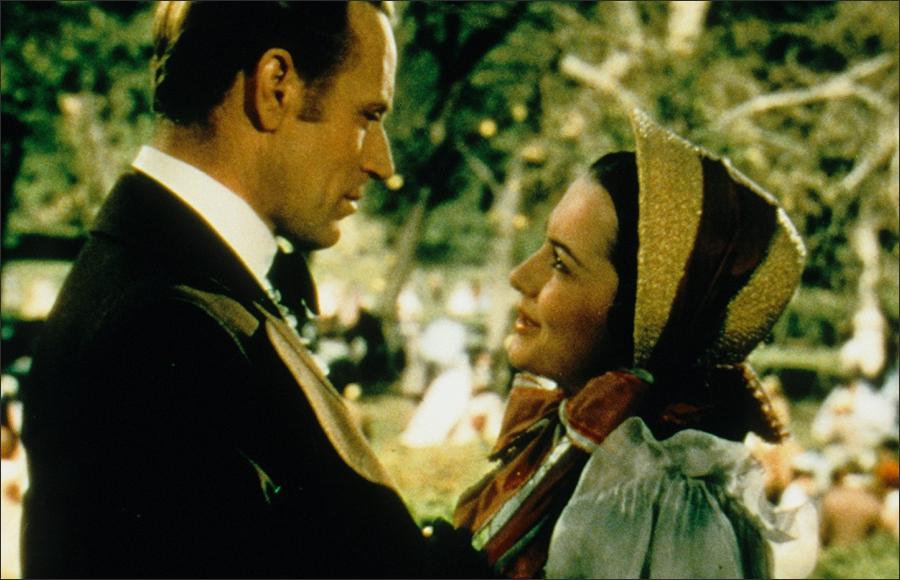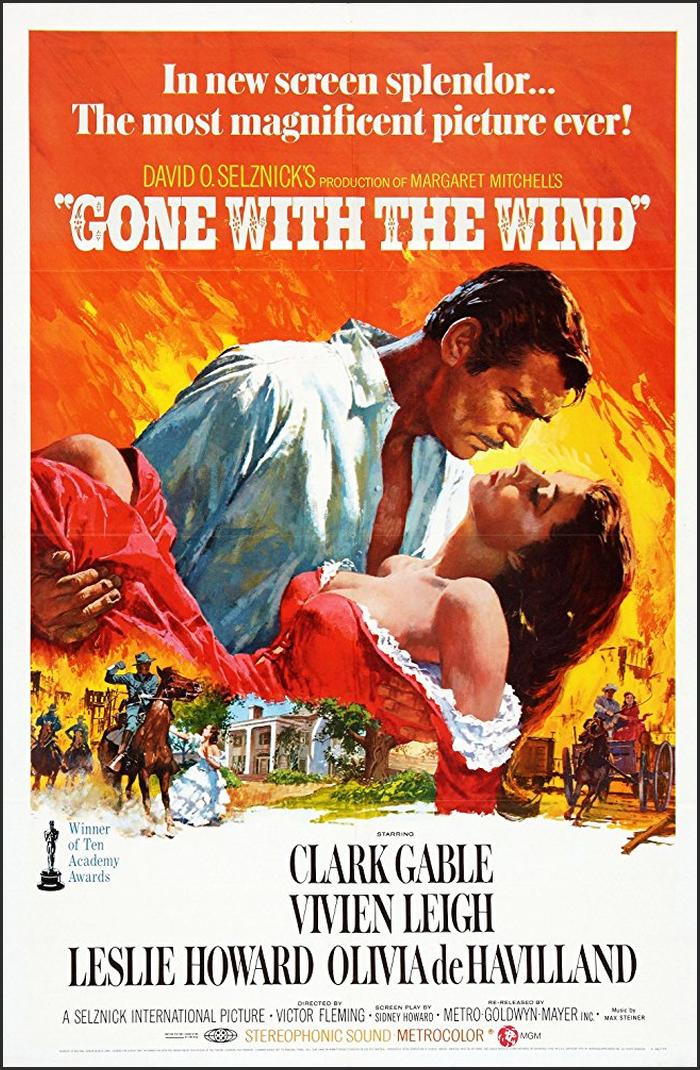Gone With The Wind movie storyline. This tale of the Old South from the start of the Civil War through to the period of reconstruction focuses on the beautiful Scarlett O’Hara. Before the start of the war life at the O’Hara plantation, Tara, could only be described as genteel. As for the young Scarlett, she is without doubt the most beautiful girl in the area and is always the belle of the ball.
She is very much looking forward to a barbecue at the nearby Wilkes plantation as she will get to see the man she loves, Ashley Wilkes. She is more than a little dismayed when she hears that he is to marry his cousin Melanie Hamilton and in a fit of anger, she decides to marry Melanie’s brother. War is soon declared and as always seems to be the case, men march off to battle thinking that it will only last a few weeks.
Now living in Atlanta, Scarlett sees the ravages that war brings. She also becomes re-acquainted with Rhett Butler, whom she had first met at the Wilkes barbecue. Now a widow, she still pines for the married Ashley and dreams of his return. With the war lost however, she returns to Tara and faces the hardship of keeping her family together and Tara from being sold at auction to collect the taxes. She has becomes hardened and bitter and will do anything, including marrying her sister’s beau, to ensure she will never again be poor and hungry. After becoming a widow for the second time, she finally marries the dashing Rhett but they soon find themselves working at cross-purposes, their relationship seemingly doomed from the outset.
Gone With The Wind (1939) is often considered the most beloved, enduring and popular film of all time. Sidney Howard’s script was derived from Margaret Mitchell’s first and only published, best-selling Civil War and Reconstruction Period novel of 1,037 pages that first appeared in 1936, but was mostly written in the late 1920s.
Producer David O. Selznick had acquired the film rights to Mitchell’s novel in July, 1936 for $50,000 – a record amount at the time to an unknown author for her first novel, causing some to label the film “Selznick’s Folly.” At the time of the film’s release, the fictional book had surpassed 1.5 million copies sold. More records were set when the film was first aired on television in two parts in late 1976, and controversy arose when it was restored and released theatrically in 1998.
The famous film, shot in three-strip Technicolor, is cinema’s greatest, star-studded, historical epic film of the Old South during wartime that boasts an immortal cast in a timeless, classic tale of a love-hate romance. The indomitable heroine, Scarlett O’Hara, struggles to find love during the chaotic Civil War years and afterwards, and ultimately must seek refuge for herself and her family back at the beloved plantation Tara. There, she takes charge, defends it against Union soldiers, carpetbaggers, and starvation itself. She finally marries her worldly admirer Rhett Butler, but her apathy toward him in their marriage dooms their battling relationship, and she again returns to Tara to find consolation – indomitable.
Authenticity is enhanced by the costuming, sets, and variations on Stephen Foster songs and other excerpts from Civil War martial airs. Its opening, only a few months after WWII began in Europe, helped American audiences to identify with the war story and its theme of survival.
Gone With The Wind (1939)
Directed by: Victor Fleming
Starring: Clark Gable, Vivien Leigh, Thomas Mitchell, Barbara O’Neil, Evelyn Keyes, Ann Rutherford, George Reeves, Fred Crane, Hattie McDaniel, Oscar Polk, Butterfly McQueen, Alicia Rhett
Screenplay by: Sidney Howard
Production Design by: William Cameron Menzies
Cinematography by: Ernest Haller, Lee Garmes
Film Editing by: Hal C. Kern, James E. Newcom
Costume Design by: Walter Plunkett
Set Decoration by: Howard Bristol
Art Direction by: Lyle R. Wheeler
Music by: Max Steiner
Distributed by: Loew’s Inc.
Release Date: December 15, 1939
Views: 195
